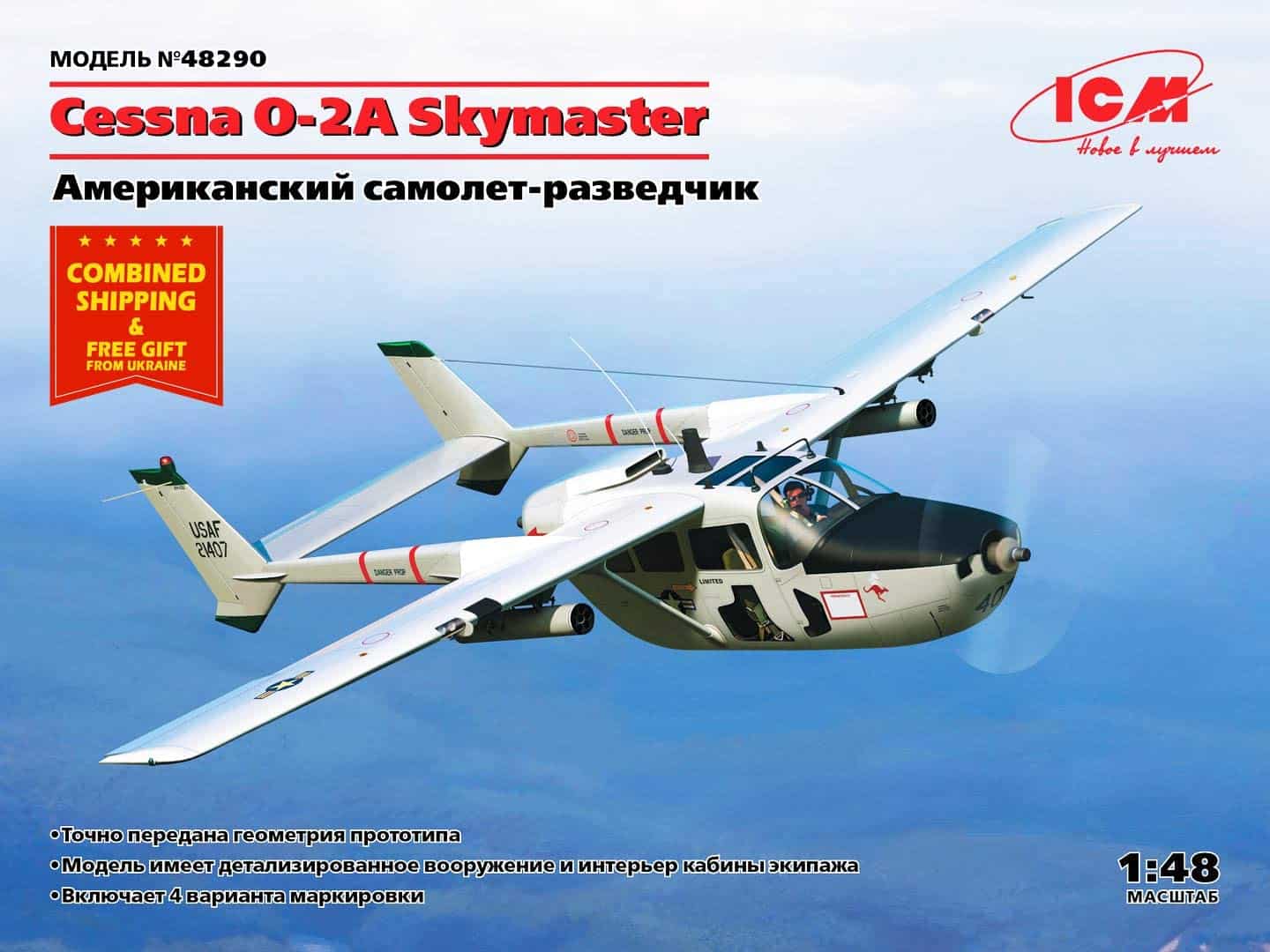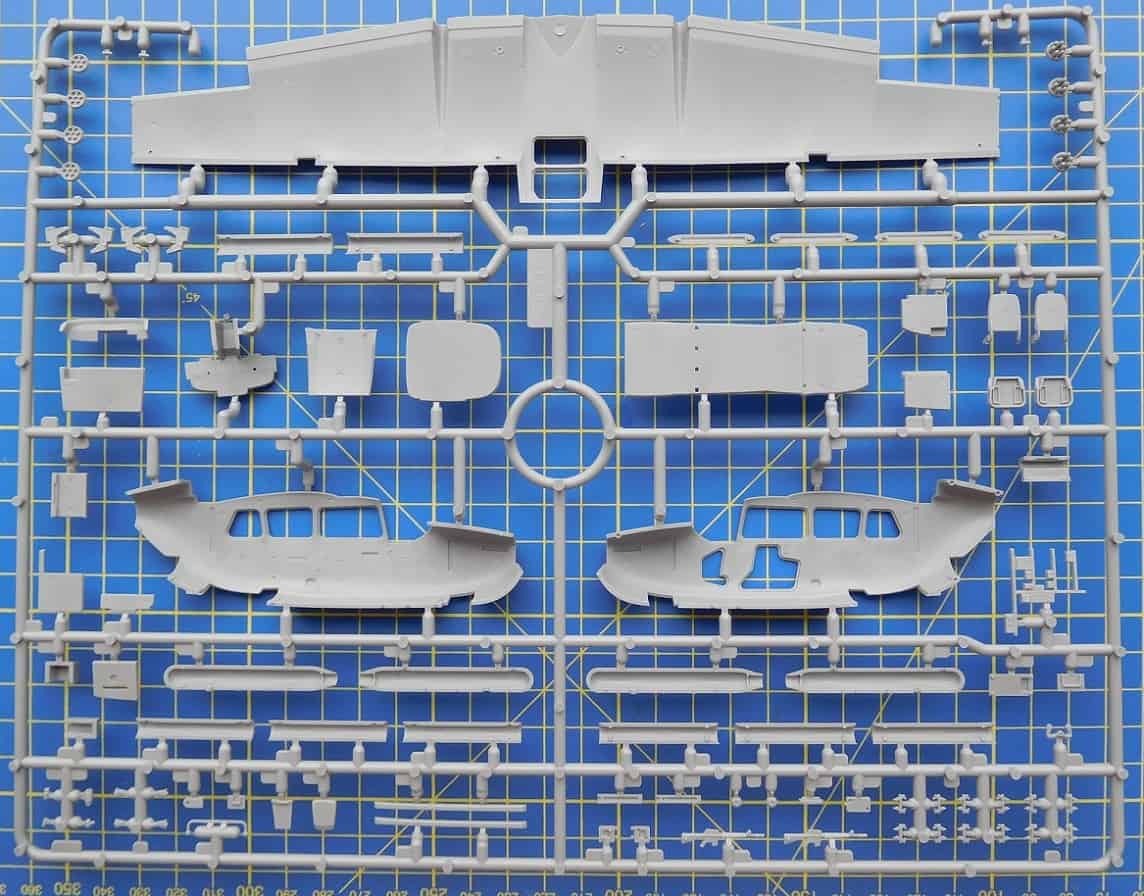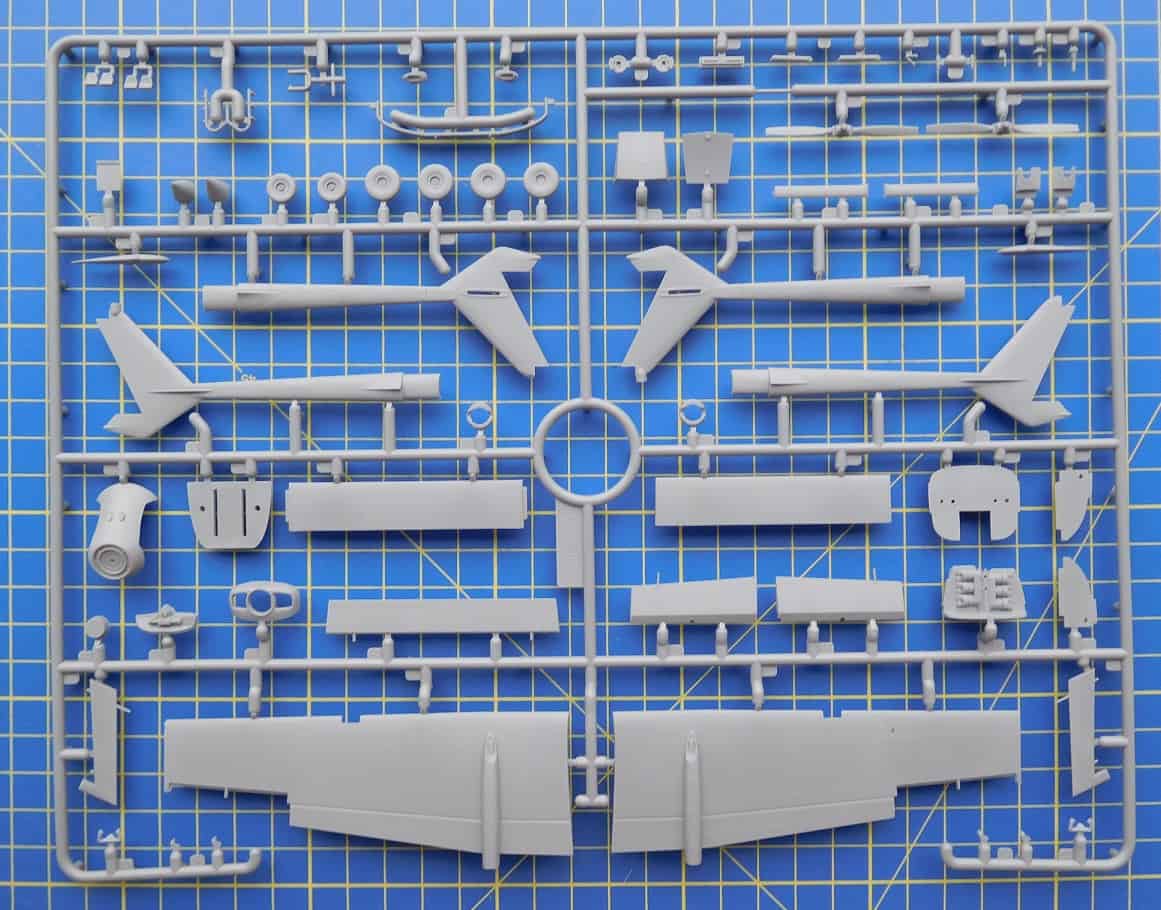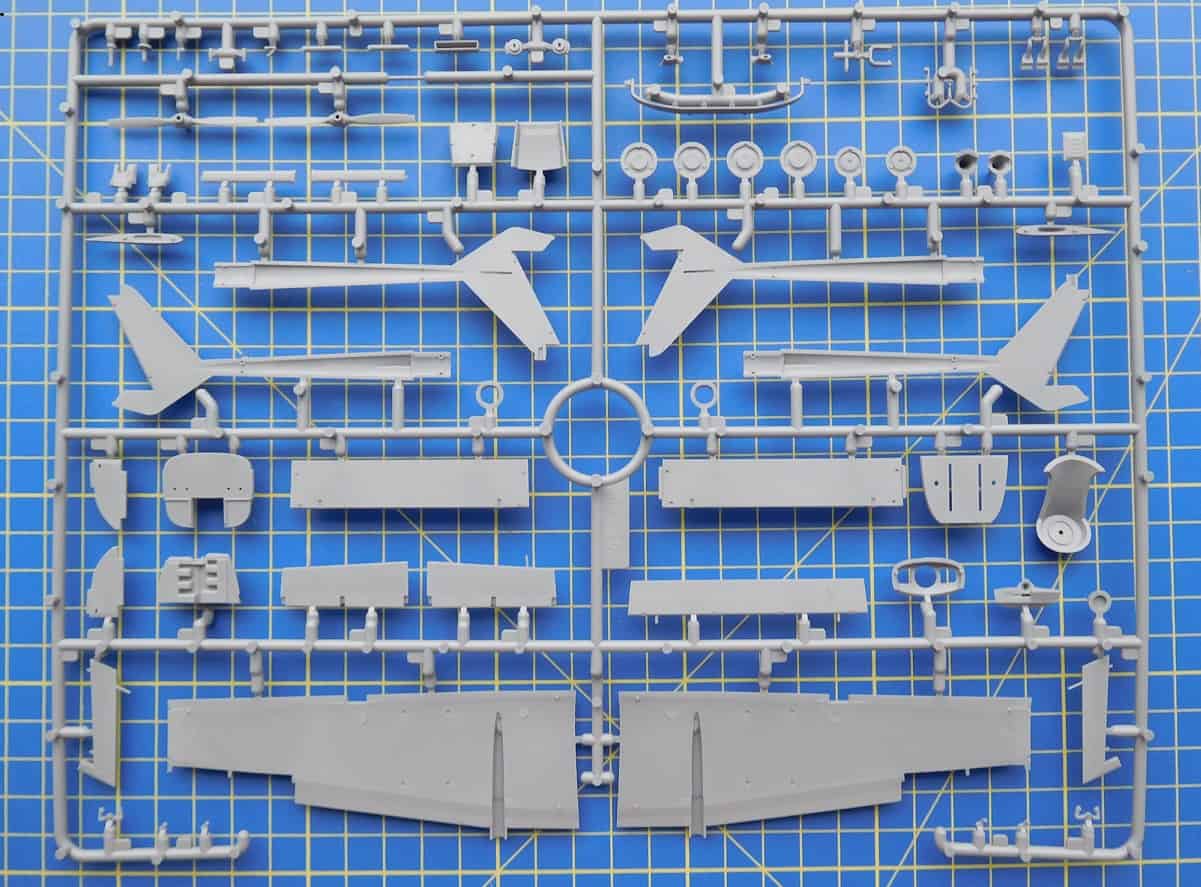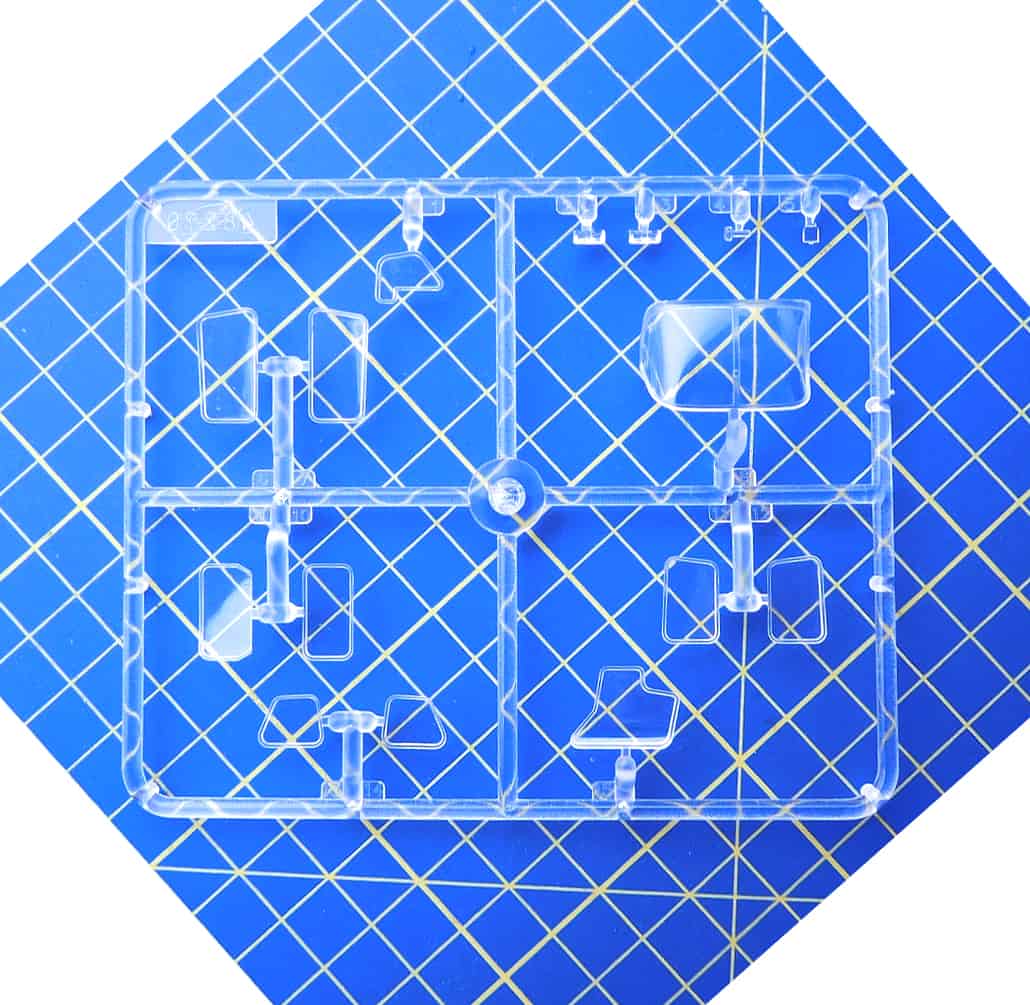Cessna O-2 Skymaster ICM Review
ICM 48290 – 1/48
Prototype: The Cessna O-2 is a twin-engine military aircraft produced by the US aircraft manufacturer Cessna Aircraft Company based on the civilian model 337 “Skymaster“. Due to the experience during the Vietnam War, the USAF had a need for small aircraft for the air traffic control service, whereby these machines were to be manned by a so-called forward air controller, the observer, in addition to the pilot. Last but not least, these aircraft were intended to replace the now-outdated Cessna O-1 Bird Dog. In order to save the costs of new development, a suitable series product was sought for this purpose. At the end of 1966, the choice fell on the Cessna 337 Skymaster.
Externally, the O-2 (the O stands for the English word observation) differed from the 337 only in that it had additional windows for the observer and the four carriers attached to the wings for external loads. Luminaries, light weapons, or missiles could be attached to these carriers. In contrast to the civilian variant, the O-2s were equipped with radio and navigation systems that were extremely modern for the time.
The full name of the standard version of this aircraft, of which a total of 501 units were delivered to the US Air Force and 12 units to the Iranian Air Force at the beginning of 1970, was O-2A. The US Air Force decommissioned its last O-2s in the 1980s.
For psychological warfare, 31 machines were equipped with three 600-watt audio amplifiers, directional loudspeakers, and a release device for leaflets. These aircraft, built as civilian Cessna 337s, were given the designation O-2B. Furthermore, these were not provided with additional windows for the observer.
Under the type designation Cessna 348 (military: O-2T), a prototype equipped with two turboprop engines of the Allison 250 series with 317 WPS each completed its maiden flight in the autumn of 1969. The performance data of this version planned as a fire control aircraft were improved accordingly. Derived from the O-2B, the series version O-2TT with an extended fuselage (9.85 m) and a larger wing (wingspan 13.11 m / wing area 18.81 m²) was to emerge, but this was not implemented. By the end of production in 1980, Cessna had made a total of 513 military versions.
Kit: After Roden had already released the O-1 in 1/48, the Ukrainian manufacturer expected the successor model, especially since this was already available in 1/32. With ICM, however, another manufacturer came before it, and considering the quality of the last ICM kits, this is not necessarily a disadvantage. In the sturdy white box, which, as always, is completed with a color-printed slip lid, there are two gray and one clear injection molded part. Decals and the assembly instructions complete ICM’s offer to the model maker. The quality of the plastic parts is excellent. There is hardly any burr and the engraving is sharp and even.
The division of the trunk is classic in the left and right halves. This also applies to the horizontally divided wing. The two vertically split tail booms are glued into them. The easily visible cockpit is designed quite nicely, but a scratch or with the help of the accessories market is even more possible. The engine is only shown as a relief, but only visible through the small ventilation openings in the front. So this is sufficient. The clear parts are glued in from the inside. Appropriate caution must be exercised here.
Nevertheless, it is essential to ensure good adhesion so that the panes are not pressed into the model when masking. On the last page of the assembly instructions, there is a pattern for cutting the masks, very commendable. The interior is purely military by the way. In addition, the kit is provided with a right-hand observer window in the door. An open representation of the doors is not intended.
The spraying of the main landing gear swing arm is not completely optimal. This is very tight on the inside with six sprues and so it is very difficult to remove from the casting frame without damage. I got a replacement in brass from Aerocraft Models. For reasons of stability, this is certainly not necessary, even if you should provide some ballast in the bow – the nose landing gear strut is also included with that set.
Only the ailerons need to be attached to the wing separately from the control surfaces. These are provided in a neutral position. Nevertheless, the entire structure with the tail unit and struts are not exactly trivial, construction steps 51 to 69 are intended for this. You can then decide on an armament option. Nevertheless, the kit gives the impression that there will be a few problems with the alignment.
The ICM decal sheet is quite small but contains many maintenance instructions. A manufacturer is not specified, so you have to wait and see how these decals behave. In any case, the visual impression is very good. Four painting variants can be represented with these wet sliding pictures, three gray-white machines, and a black model. Unfortunately, there is no (no) information about the models. There are others e.g. in the sets of Caracal or AoA Decals.
- Cessna O-2A Skymaster, USAF, Bu.No. 21407; light gray/white (small kangaroo on the right and left at the bow), green tail unit tips
- Cessna O-2A Skymaster, USAF, Bu.No. 10868; light gray/white
- Cessna O-2A Skymaster, USAF, Bu.No. 11053; light gray/white
- Cessna O-2A Skymaster, USAF, Bu.No. 418; Matt black over everything with red maintenance instructions and usage markings on the left bow.
Conclusion: ICM brings the model-building community a nice little model of the O-2 Skymaster. One could have wished that the doors had been hosed separately and completely clear. But maybe that’s asking too much for the price range. In any case, it is gratifying that the Skymaster is now available as a modern kit.

